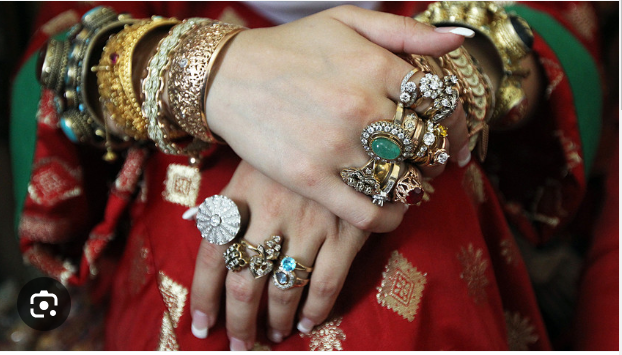Jewelry has long been a vessel for cultural expression and identity, with each civilization crafting unique pieces that tell tales of their heritage. In this article, we embark on a journey to compare Viking and Slavic jewelry, exploring the distinctive features, cultural symbolism, and craftsmanship that define these two rich traditions.
Viking Jewelry:
- Materials and Craftsmanship: Norse jewelry, originating from the ancient Norse culture of Scandinavia, primarily utilized materials such as silver, gold, bronze, and iron. Skilled craftsmen employed techniques like filigree, casting, and intricate metalwork to create pieces adorned with symbols from Norse mythology, nature, and daily life.
- Symbols and Motifs: Viking jewelry is adorned with symbols deeply rooted in Norse mythology. Icons like Mjölnir (Thor's Hammer), Valknut, Yggdrasil (World Tree), and runes are prevalent. Animal motifs, particularly wolves and ravens, are also common, reflecting the Vikings' connection to nature and the wild.
- Cultural Significance: Viking jewelry holds profound cultural significance, acting as markers of social status, allegiance to deities, and protective talismans for warriors. The intricate designs not only served an ornamental purpose but also conveyed narratives from Norse mythology, reinforcing a connection to the cosmos.
- Viking Ship Imagery: Depictions of Viking ships, symbols of exploration and seafaring prowess, frequently adorned Norse jewelry. These intricate ship designs represented the adventurous spirit of the Vikings and their legendary journeys across the seas.
Slavic Jewelry:
- Materials and Craftsmanship: Slavic jewelry, originating from the diverse Slavic cultures of Eastern Europe, utilized materials such as silver, gold, and semiprecious stones. Craftsmen employed techniques such as granulation, enamelwork, and intricate filigree to create pieces reflecting the artistic sensibilities of the region.
- Symbols and Motifs: Slavic jewelry is characterized by a rich tapestry of symbols and motifs rooted in Slavic folklore and pagan traditions. Symbols like the Kolovrat (Sun Wheel), Zbruch Idol, and Perun's Thunder represent cosmic forces, protection, and divine power. Animal motifs, particularly birds and horses, are also prevalent.
- Cultural Significance: Slavic jewelry holds deep cultural and spiritual significance, often acting as talismans for protection and symbols of identity. Pieces like the Kolovrat, symbolizing the eternal cycle of life, and the Zbruch Idol, a representation of the god of fertility, embody the interconnectedness of Slavic culture and nature.
- Nature-inspired Designs: Slavic jewelry often incorporates nature-inspired designs, reflecting the importance of the natural world in Slavic spirituality. Depictions of plants, flowers, and animals are common, representing the Slavic connection to the land and the cycles of nature.
Comparison:
- Materials and Craft Techniques: While both Viking and Slavic jewelry incorporate precious metals, Viking jewelry emphasizes silver, gold, and bronze, with intricate metalwork techniques. Slavic jewelry showcases a diverse array of materials and often features granulation, enamelwork, and filigree, emphasizing artistic complexity.
- Symbols and Cultural Significance: Viking jewelry predominantly draws from Norse mythology, with symbols like Mjölnir and Yggdrasil carrying deep spiritual and cultural meanings. Slavic jewelry, on the other hand, reflects a rich tapestry of symbols rooted in Slavic folklore, paganism, and nature worship.
- Cultural Diversity: Viking jewelry originates from a specific historical and cultural context in Scandinavia, while Slavic jewelry encompasses a broader range of cultures across Eastern Europe. The diversity in Slavic jewelry reflects the various Slavic tribes and their unique artistic traditions.
- Nature and Cosmic Themes: Both traditions share an appreciation for nature, with animal motifs and nature-inspired designs prevalent in both Viking and Slavic jewelry. However, while Viking jewelry often emphasizes cosmic themes and the connection to Norse mythology, Slavic jewelry frequently integrates symbols representing the cycles of nature and fertility.
In comparing Viking and Slavic jewelry, we unveil the rich expressions of cultural identity, spirituality, and craftsmanship inherent in each tradition. While Viking jewelry reflects the warrior culture and mythological narratives of ancient Scandinavia, Slavic jewelry showcases the diverse symbolism and artistic traditions across Eastern Europe. Both traditions exemplify the profound connection between jewelry and cultural heritage, echoing the stories and beliefs of their respective civilizations. Viking Jewelry for sale.
Top of Form

